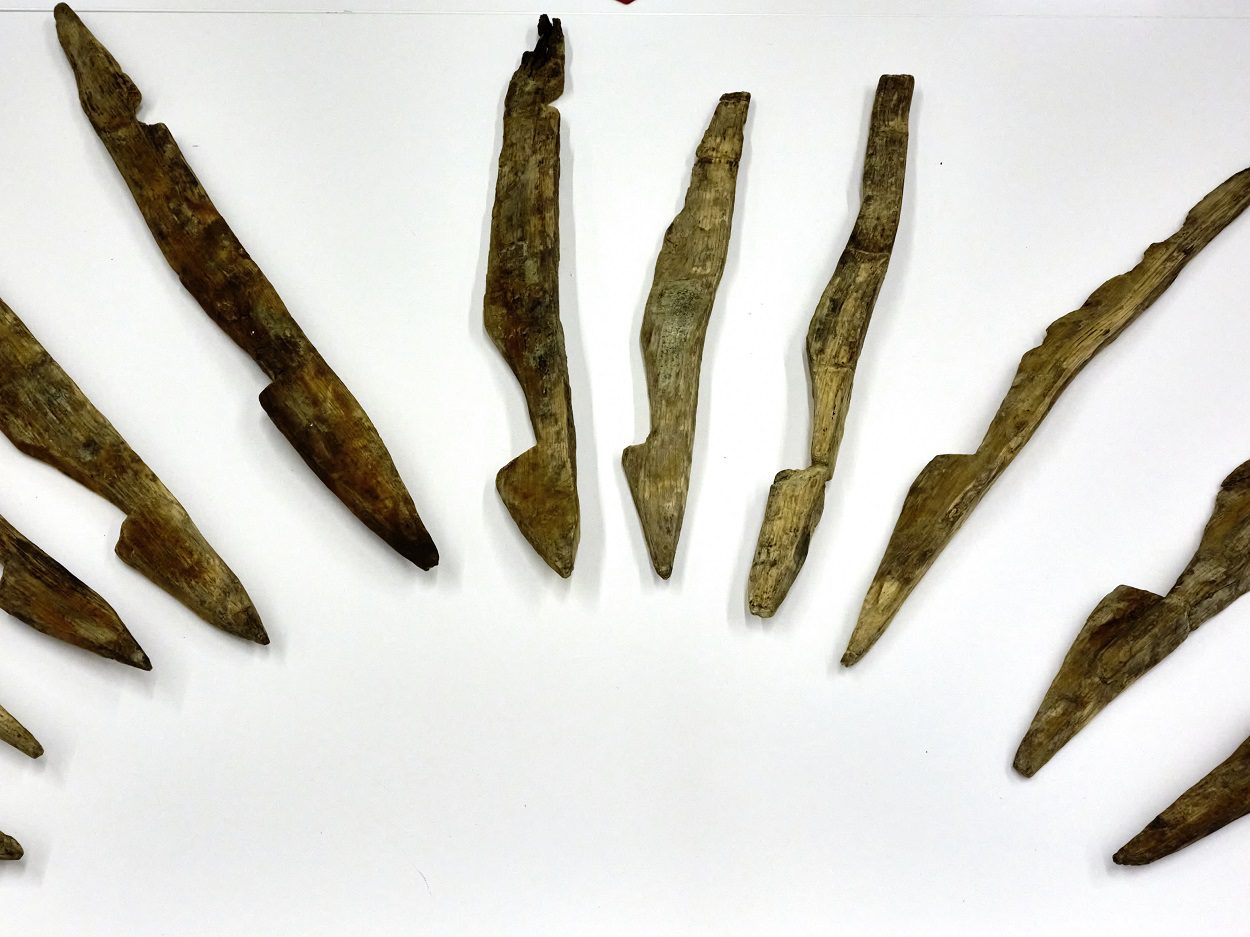In 2023, archaeologists from Goethe-Universität Frankfurt am Main uncovered a series of wooden defensive spikes during excavations of a 1st century AD Roman fort in Bad Ems, western Germany.
The spikes were placed in ditches around the fort in a V-shape to serve as defensive barriers, which were found preserved in the water-logged soil of Blöskopf hill.
No other examples of spikes have been found throughout the Roman world, however, they are referenced in Roman writings such as an account by Julius Caesar in his book, the “Gallic Wars”.
Ceasar wrote: “Behind these he raised a rampart and wall twelve feet high; to this he added a parapet and battlements, with large stakes cut like stags’ horns, projecting from the junction of the parapet and battlements, to prevent the enemy from scaling it, and surrounded the entire work with turrets, which were eighty feet distant from one another.”
The Romans established two military encampments that were first discovered in 2016, with further evidence of Roman smelting works.
The spikes were uncovered in the smaller of the two encampments and likely extended throughout the entire downward tapering ditch.
The larger encampment, designated as “Auf dem Ehrlich”, dates back to the early Roman imperial period, however, no traces of spikes were found during excavations.
Archaeologists propose that the encampments were built to protect silver mining operations in the area, supported by historical records such as Tacitus’ Annals, which detail Emperor Claudius assigning the praetor, Curtius Rufus, to oversee silver extraction.
Following a length preservation process, conservators from Goethe-Universität Frankfurt am Main have unveiled the Roman spikes for the first time at the Leibniz Centre for Archaeology in Mainz.
“We owe these unusually well-preserved archaeological finds primarily to the oxygen-poor wet soil, which was covered by dense layers of sediment. In my 35 years of professional activity, I have never had to deal with such firmly attached sediment layers,” says Markus Wittköpper, wet wood preservation expert at LEIZA.
Header Image Credit : LEIZA / Sabine Steidl
Sources : Leibniz Centre for Archaeology – The early imperial military facilities near Bad Ems in the context of Roman mining , reports on archeology on the Middle Rhine and Moselle, vol. 23, 2024.







